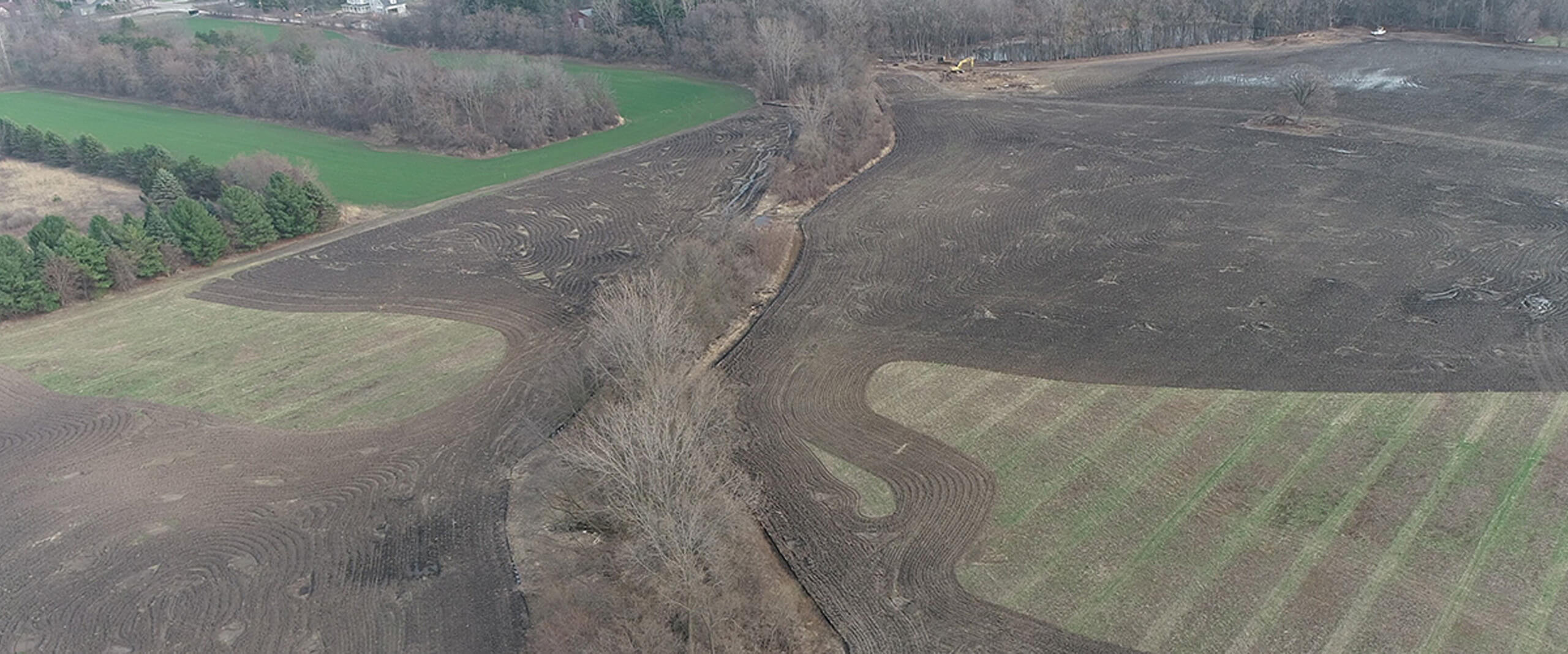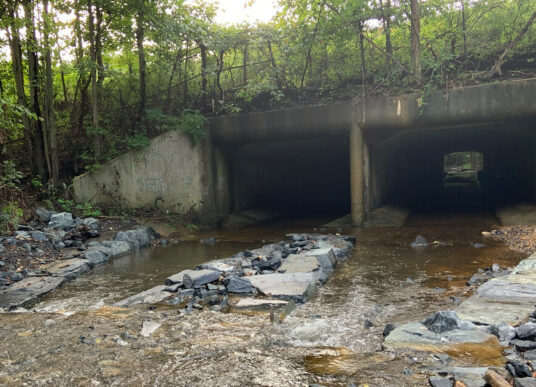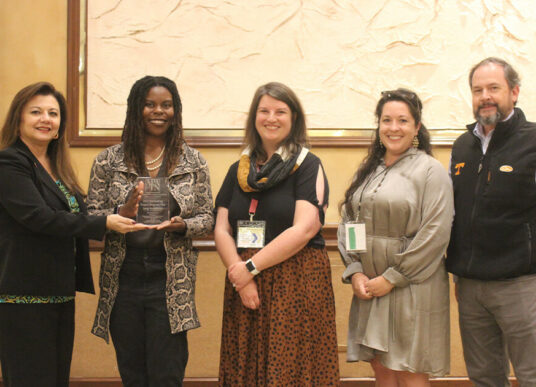For many years, wetlands all over the country have been drained or altered and the land used for other purposes.
According to the Wisconsin Wetlands Association, it is estimated that since the state’s inception in 1848, more than 50% of its original wetlands have been destroyed. When wetlands are impacted, some of the most important parts of our natural green infrastructure are lost, including habitats for plants and animals as well as critical resources that help filter and keep our water clean, reduce flooding, and replenish our drinking water supplies. Over the last 50 years, our nation has made significant progress in restoring destroyed environments and protecting and minimizing damage to our remaining wetlands. Located in Racine County, Wisconsin, the Meachem Wetland was drained over the past 100 years to support agriculture and a quarry operation. KCI, in partnership with the firm’s in-house specialty contracting group Environmental Technologies and Construction (ETC), is leading efforts to restore the 60-acre preserve back to its natural state.
Restoration of the degraded area involved returning the area to its preexisting condition, which called for extensive planning, design, engineering and construction efforts from site identification to monitoring. Initial identification of the site required understanding the local landscape and adjacent ecosystems. Aerial photographs, historic data, maps, discussions with local conservation organizations and an understanding of property ownership all helped steer the search.
Working in conjunction with the Wisconsin Department of Natural Resources (DNR), it was determined that the restoration of the Meachem Wetland could address many of the watershed threats identified in the Environmental Protection Agency-approved Pike River Watershed Plan, which aims to increase flood storage, slow runoff, improve water quality, and create valuable habitats for native species. Identified as a green infrastructure parcel, the site would support the plan’s goals to promote storage and infiltration of stormwater and be permanently protected under a conservation easement.
With the support of the Root-Pike Watershed Initiative Network (WIN) and local and state partners, the restoration of the site, funded by the Wisconsin Wetland Conservation Trust, will also help generate wetland credits to offset impacts in the watershed from other development projects. “The Meachem Wetland project is a great example of a public-private partnership where the DNR, KCI, and the local watershed group – Root Pike WIN – collaborated to implement a great wetland restoration,” said Josh Brown, WWCT Program Coordinator for the Wisconsin Department of Natural Resources. “Wetland mitigation projects like this one protect watershed health by offsetting permitted wetland impacts from development in the same watershed where the impacts occurred.”
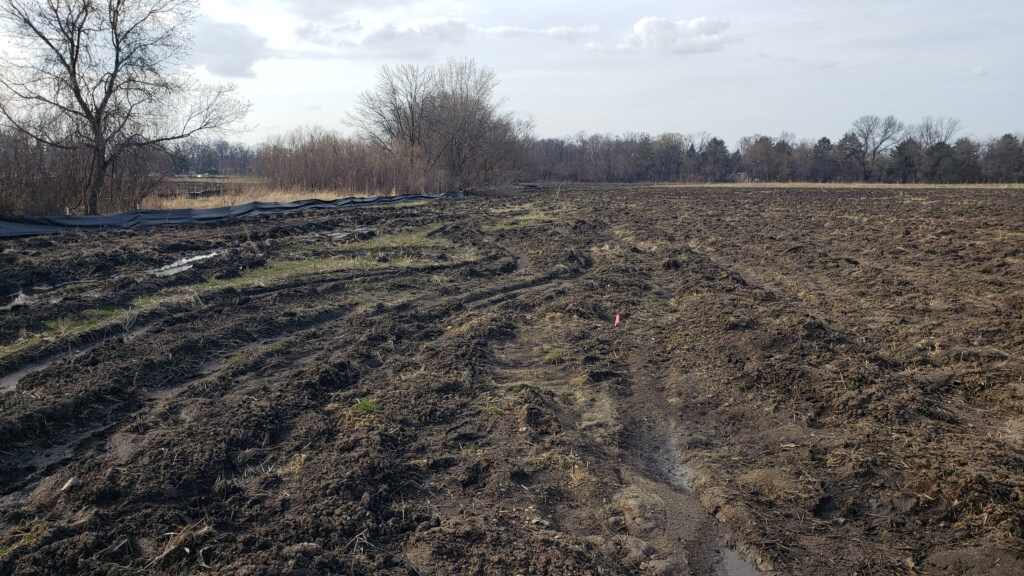 Restoring this 60-acre site to near pre-settlement conditions will help lessen impacts from recent nearby developments and create a public space for the community to enjoy.
Restoring this 60-acre site to near pre-settlement conditions will help lessen impacts from recent nearby developments and create a public space for the community to enjoy.When evaluating the area to determine its potential for restoration, our team found that miles of trenches had been dug throughout the site, drain tiles were installed under the soil and a ditch had been added to collect and move water off the property. An abandoned quarry used to remove material also left an open water-filled pit and piles of unusable waste from its operation.
“The first key part of the restoration process is trying to decipher what was done to the wetland to alter its composition, and then work backward to put the pieces back together.”
– Joseph J. Pfeiffer Jr., SPWS, Vice President and Regional Practice Leader
Further assessment of the area included identifying any fatal flaws and issues that may impact the restoration. KCI gathered data and research and developed a schematic prospectus, which our team submitted to the Federal-State Interagency Review Team (IRT) for their preliminary assessment of the site. After evaluation and feedback from the IRT, our team purchased the Meachem Wetland and then kicked off a robust and detailed study of the landscape that included hydrology, modeling, forensic analysis and a soil survey.
KCI scientists also used the nearby Racine County’s Sanders Park Hardwoods State Natural Area as a reference site to determine the characteristics of the land before the wetland was destroyed. These pieces were used to develop the comprehensive plan as the framework for restoring the area, which was then submitted to the IRT for their feedback and approval. During this time, our team also worked closely with resource agencies and the local government to obtain all necessary permits needed to implement the restoration.
Before construction could begin, our team developed a detailed site water budget, which is a tool used to account for all the water that flows in and out of the project area. This helps to determine the magnitude of past alterations and dictates needed mitigation actions. Often when a site is altered for agricultural use, the land is leveled and sloped to produce uniform crops. This uniformity prevents water from being retained, eliminating a natural function of a wetland. Another agricultural alteration that had to be removed was the addition of drain tiles. Installed starting back in the 1930s and ‘40s, these pipes were made of terracotta clay and plastic and placed two or three feet below the surface in rows throughout the field. Spaced 30-40 feet apart, they were laid strategically to collect and channel the water to other areas of the site.
To identify the general location of the tile lines at the Meachem Preserve, KCI planners used aerial photographs to observe differences in the soil color. Our team then used ground penetrating radar to mark the exact location and depth of the pipes. Once located, crews used a track hoe to disable the tiles by either breaking them apart in key locations or removing sections. To ensure that the restoration would not increase any unwanted water on adjacent neighboring property owners, KCI constructed a site berm and a special boundary tile to channel any water back into the wetland.
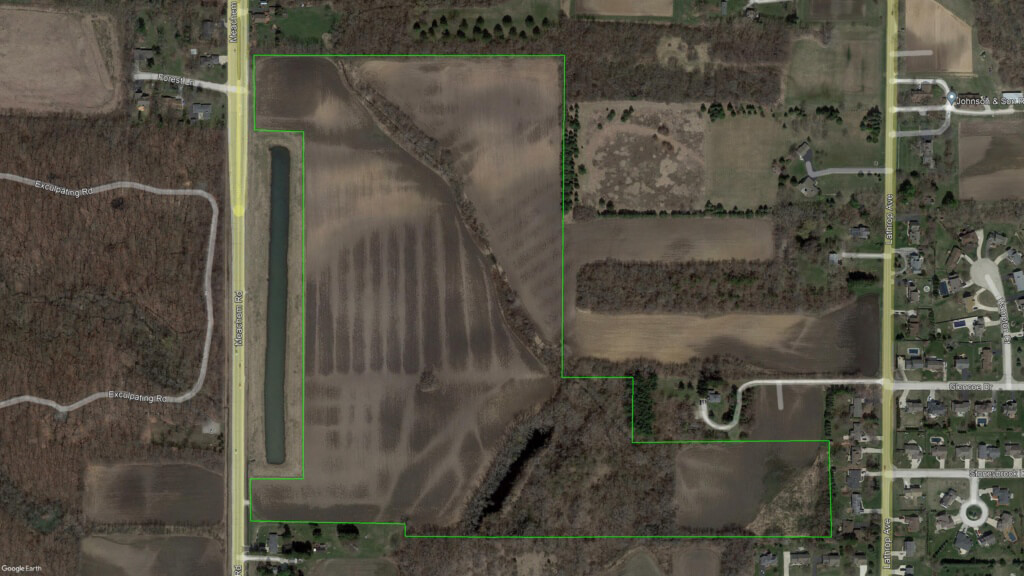 Differences in soil color can be seen on aerial photographs and help direct crews to the general location of drain tiles, which were historically put in place to improve crop growth.
Differences in soil color can be seen on aerial photographs and help direct crews to the general location of drain tiles, which were historically put in place to improve crop growth.With the detailed site water budget in place and the drain tiles disabled, our team was able to move forward with restoring vegetation on site to a pre-settlement condition. Early in the project, significant mechanical and herbicide treatments were employed to control woody and herbaceous invasive species, which can hinder the establishment and growth of native plants and ecological processes. Once these species were managed, structured variability in the soil elevation was created using wetland hummock and windfall microtopography.
Our team then studied the plants in the nearby state natural area to develop a plan to replant the Meachem Wetland Preserve. One of the best remaining natural places in the state, this dedicated preserve provided a recipe for the various community types present in a local wetland and offered guidance on which species to include in the restoration. These efforts, combined with the site’s forensic analysis that outlined different community types, allowed our team to develop a planting plan that mimicked what nature would have done organically.
In the spring of 2021, KCI/ETC employees teamed up with workers from the Wisconsin Conservation Corps to plant more than 20 species of 40,000 trees and shrubs throughout the site. Every day over the course of several weeks, planters were given a custom tree mix and instructions on species and spacing before being directed to a specific zone where they would hand plant each of the bare-root seedlings and live stakes.
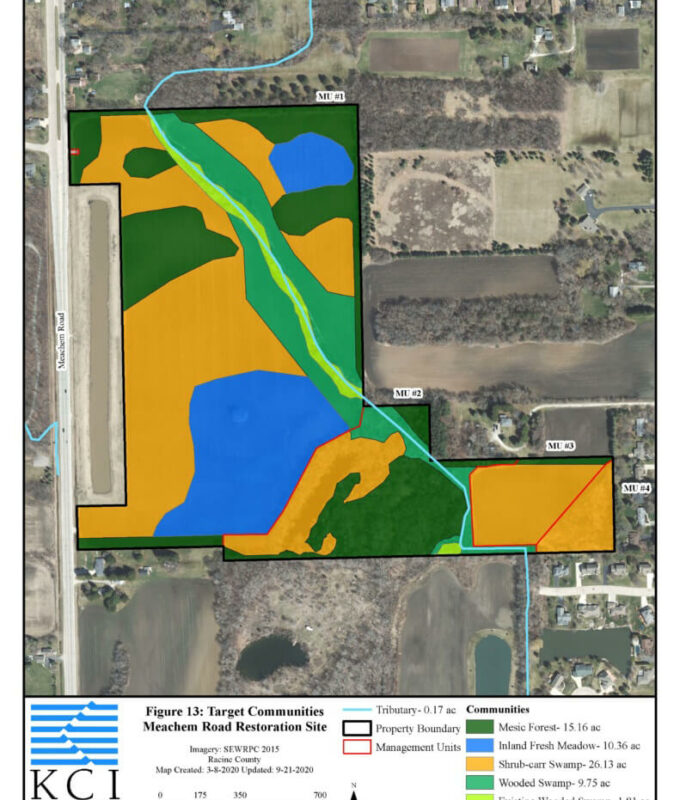 Each wetland community type has a slightly different makeup. Based on features such as soil type, drainage, and elevation, four different targeted areas were identified at the Meachem site and directed the plant mix required for each section.
Each wetland community type has a slightly different makeup. Based on features such as soil type, drainage, and elevation, four different targeted areas were identified at the Meachem site and directed the plant mix required for each section.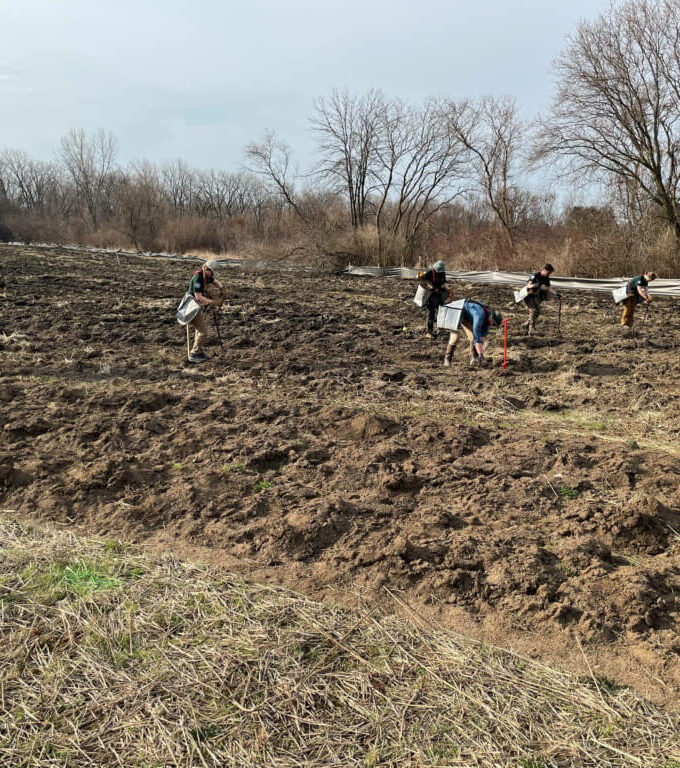 Using a dibble bar, a four- to six-foot-long metal bar with a blade on the end, planters were able to efficiently move through the site placing each of the species into the ground.
Using a dibble bar, a four- to six-foot-long metal bar with a blade on the end, planters were able to efficiently move through the site placing each of the species into the ground.Following the implementation of the project design, KCI remains responsible for monitoring and managing the site for the next several years. During this time, certain benchmarks, such as controlling invasive species, hydrology, and vegetation requirements, must be met for mitigation credits to be released. To ensure these program goals are achieved, our team must be adaptive and responsive to continually changing conditions. This requires frequent site visits to determine if planned methods are successful or require alternative solutions.
“An advantage of KCI completing both the restoration design work and construction is that we are able to keep everyone informed on what is going on and easily make adjustments if necessary.”
– Harald-Jordy Jordahl, Ecosystems Dynamics Project Manager
The Meachem Wetland Preserve is the largest among several KCI projects in the Pike River Watershed to improve water quality and wildlife habitat. After final closeout, long-term management of the site will be funded by the Natural Resources Foundation of Wisconsin, enabling the area to not only remain a location where wildlife can flourish but also be open to the public for nature-based outdoor activities such as hiking. KCI is proud to work with the local community, conservation groups, neighbors, and state and federal agencies to make the Meachem Wetland Preserve a success and a model for future restorations.
